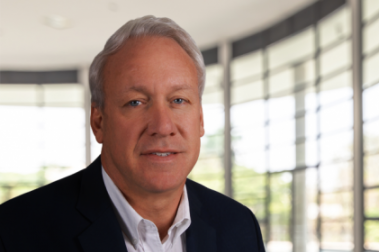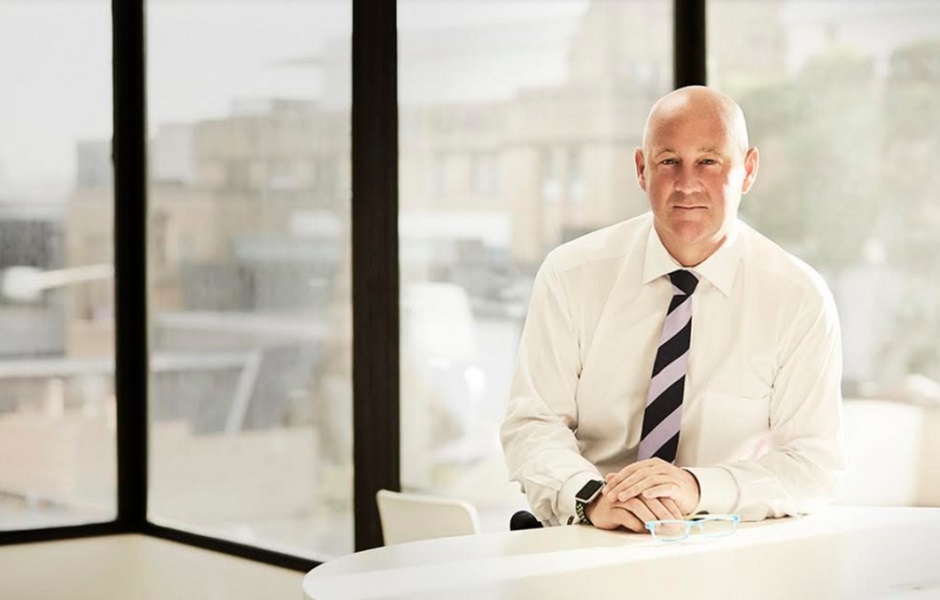
Australian Wool Growers Association director Chick Olsson.
DECLINING grower levy proceeds to Australian Wool Innovation from falling prices and production has prompted a former director to call for the company’s board to take an immediate 50 percent cut in fees.
Former AWI director and Australian Wool Growers Association director Chick Olsson has also called for deeper staff cuts around a more efficient business model, matching staffing levels with levy income and AWI’s research, development and marketing projects.
“Not just deeper cuts, a new model is needed.”
This model would involve just 20pc of income spent on overheads and the rest on projects, he said.
“Staff numbers will have to be reduced massively in line with new budgets.
“Some of the AWI staff do a fantastic job, but we should only have the brightest and best there. ”
Mr Olsson said the AWI’s directors should meet and agree to an immediate 50 percent fee decrease until wool prices are rising and sustainable again. On Friday, AWI directors will hold one of their regular meetings.
According to the 2019 annual general meeting papers, AWI’s non-executive directors were paid $729,885 in short-term employee and post-employment benefits, and key management personnel costs totalled $2,445,873.
“The board must now take a 50pc pay cut, in line with the rest of the growers that put them there, if it is seriously committed to the wool industry.
“Otherwise I will find a board to replace it and do it for half,” Mr Olsson said.
“I’m happy to stand up with four or five other international directors to do it for free for a year to get it back on track.”
Mr Olsson said one of the reasons he sought nomination to stand for the board last year because many board costs had been “hidden” under marketing, research and development.
The NSW wool grower said he could not comment on whether AWI chief executive Stuart McCullough should also agree to a pay cut, recognising his salary as a board responsibility.
“But if any CEO in the world was linked to such a huge price decrease in such a short time, one would have to look at what options were available.”
Mr Olsson said believes AWI should be employing under 100 people.
“AWI shouldn’t be about employing people, it should be about having sufficient money for projects – you can’t have both.”
Mr Olsson believed growers had no idea what AWI was doing to cut costs.
“I just don’t believe a word they are saying – AWI spends most of its time trying to convince us why they deserve a 1.5 or 2 percent (levy), that’s their main focus in life.
“Hence, why they need so many people in Australia to convince wool growers to keep the levy going.”
AWI refuses to confirm if director fee cuts have been considered
Sheep Central last week asked AWI chair Colette Garnsey and chief executive officer Stuart McCullough for the second time in two months whether the AWI board had considered cutting its directors’ fees or the CEO’s salary, as many other companies have done during the COVID-19 pandemic.
Ms Garnsey and Mr McCullough, last week and in early June, refused to confirm or deny whether a director fee cut was necessary, had been discussed or implemented, or whether the CEO had accepted a pay cut.
The two AWI leaders have also refused to acknowledge if the dramatic price downturn of last week – when the AWEX Eastern Market Indicator dropped to A945c/kg clean, its lowest point since October 2012 – might mean further cuts in AWI staffing, programs or wages at AWI.
AWI in June 2019 based its expected 2019-20 levy revenue of $73.818m on an AWEX Eastern Market Indicator of 1800c/kg clean, well under the ABARES forecast of 1865c/kg clean. However, in the 2019-20 financial year, the EMI averaged 1459c/kg clean and since July 1 in the 2020-21 season the benchmark has averaged 1045c/kg clean on lower volumes exacerbated by more clip withdrawals from auctions.
AWI’s levy income is expected to dramatically reduce again in coming months, with spring shearing and dull global trade increasing pressure on prices, and a rising stockpile of unsold wool further cutting AWI receipts. Wool prices are not expected to lift significantly from current levels until next year or when global economic conditions recover enabling retail demand to improve.
AWI is operating in a lean, efficient and transparent manner – McCullough

AWI CEO Stuart McCullough – what does not change is AWI’s strong commitment to work for the interests of Australian wool growers.
Mr McCullough last week instead simply told Sheep Central that AWI operated in a lean, efficient and transparent manner.
“But just like any business with a reduced income, we have had to make cutbacks in staffing and projects.
“The board and senior executive of AWI constantly monitor the revenue and expenditure, naturally as circumstances changes so will the size of the company’s operations and spending,” he said.
“What does not change is AWI’s strong commitment to work for the interests of Australian wool growers.”
In June, the two AWI leaders refused to expand on media statements by Mr McCullough that decisions would continue to be made as conditions worsened.
“When you take away 25 percent of our levy, 25-30pc of the wool clip and when wool prices fall by 800 cents a kilogram, that’s going to have a big impact on our revenue.
“When we were at the height of wool prices at 2100c/kg, we had 400 programs deployed internationally in both research and development, but in the next 12 months we’ll be looking at closer to 200,” he told Farmonline.
He said while AWI had initially planned to draw on its reserves by $29 million in the 2019-20 financial year, they only ended up using $10-12 million, due to AWI ceasing a number of marketing projects worldwide because of COVID-19 closing down markets.
However, Mr McCullough then refused to outline to Sheep Central by how much AWI’s revenue dropped this year compared to the same period last year or how much the program cuts would save AWI. He also would not detail how AWI used the $10-$12m it took from reserves or how many staff have been retrenched as a result of COVID-19.
In late June, The Weekly Times reported that AWI was slashing jobs and its marketing budget to cope with a shortfall in levy income due to lagging wool prices, and that the company was reviewing its financial position every six weeks. Mr McCullough said staff numbers would fall from 200 about 18 months ago to 125 in the next 12 months.
The Weekly Times reported that Mr McCullough said all marketing demand creation projects in the northern hemisphere had been stopped, but in its quarterly publication, Beyond the Bale, he said most on-farm research and development projects would continue, though AWI would “closely monitor their progress and budgets”.
WoolProducers has confidence in AWI’s cost-cutting

WPA president Ed Storey
WoolProducers Australia president Ed Storey said he was confident that AWI’s cost-cutting would reflect the downturn in levy income. This view was based on what AWI had presented to a Woolgrower Industry Consultation Panel meeting, he said.
Mr Storey cited confidentiality as the reason he would not release further details, but conceded this meant that some details of AWI cost-cutting had not been released to wool growers generally.
“That could be the case, there could be a large element of that, but that’s OK.
“There is the process of doing that at the moment, it involves people’s livelihoods and people’s careers at the company,” he said.
“I’m quite comfortable, I think it’s quite appropriate that the AWI, the board, they have a strategy as to how that should be done.
“Senior (AWI) management will be implementing that and that involves humans, so that’s OK, we elect directors to make these decisions and set strategic frameworks to address these things when this type of stuff happens,” he said.
Mr Storey said he was not aware of any details of director’s fees being cut or of any individual salary cuts.
“I can’t confirm or otherwise that.”
Mr Storey said there is no doubt that the falling market price and the reduction in the volume of wool being sold will continue to impact AWI’s levy income.
“They have had reserves but I have no doubt that as the market changes and again we’ve seen another big drop this week in the market and a quarter to a third of the wool passed in will continue to place pressure on AWI.
“It will be an evolving situation that they will have to respond to and manage their finances in the way they see fit,” Mr Storey said.
“The severe external shock the wool industry is now facing is extremely affecting growers, many of them have withheld wool from sale and those who selling are taking a much lesser price than they were a number of months ago.
“The COVID-19 pandemic has had a very serious impact on wool growers in Australia,” he said.
However, Mr Storey said he understood where Mr Olsson’s sentiment in seeking a cut in AW director fees came from.
“But I have a view in times like these that we need executives and directors working harder than ever to ensure growers funds are invested securely, they’re protected and they are looked after – that’s what we expect of our directors.
“The internal pay arrangements are not something that I focus on,” he said.
“I’m focused on how the board and management look after our funds for investment purposes and for protecting it.”
He said he has heard from AWI that the board is keenly protecting growers’ levy funds.
“And we absolutely insist on that being the case and I have confidence that that is the case.
“But we will always look to the AGM (in November) where announcements of more assurances will be publicly provided,” Mr Storey said.
“I’m sure not only at the AGM will AWI report on the financials for the year ending June 2020, but given the situation that is evolving, I’m sure they will give a more updated set of figures of employment and investment on behalf of the company.”

With the plunging wool market now charting treacherous waters, one is reminded of the huge leap in wool prices a few short years ago.
The snouts from AWI HQ pulled out their trumpets and blew like there was no tomorrow, falsely claiming credit when in reality the rise was purely market forces at work.
Few were surprised at the spectacle as the snouts swaggered from field day to show day to conference day with red, painfully swollen heads, boasting how clever they were spending your levies.
Many have long since become inured to the nonsense that emanates from AWI HQ and their siege mentality and await a change for the better.
A better system is one of being paid on performance, if the organisation is delivering for its stakeholders.
So, are they getting value for wool levy and what progress is being made in terms of productivity? Is the product what the market wants? Those are just a couple of things to look at.
What is obvious at present is that available cash will be depleted quickly now. Can those in charge work out where the cuts will be made for long-term industry benefit?
I think 50 percent is still too much for people who are not performing or simply do not have the skills required for a “skills-based board”.
It’s hard to believe that the AWI board is still fighting against time limits for directors, more than two years since the expensive EY review made a recommendation to do this. It appears they are more interested in their own pockets than in the growers who fund AWI.
The old gravy train rumbles on, with a ramshackle crew, far removed from the reality of life as an average wool grower.
AWI needs restructuring into a leaner outfit more representative of its client base. A pay cut is an excellent start, but given AWI’s history of intransigence, and following the Belarus’s dictator’s playbook, purely wishful thinking.
Chick Olsson, never has a truer word been written. “Not just deeper cuts, a new model is needed”. There should be a royal commission into the waste – $100 million a year for God knows how long, for what and who has benefited? AWI.
Mr McCullough talks about AWI’s strong commitment to work for the interests of the Australian wool growers and that AWI operates in a transparent manner. You have got to be joking. AWI is only interested in one thing – AWI. You would think it’s their company, the way they carry on.
One half of me wants the wool prices to keep going down, so we can get rid of this shocking waste of an organisation. How does the levy payer get back control of their levies, so we can invest in the projects we need?
It is is not only you Chick; no one believes a word they say. Respect for AWI is zero. Why do they spend most of their time promoting AWI? Look at “Beyond the Bale” – $350,000 a big promotion for AWI – most wool growers don’t even take the plastic off.
Ed Storey, you are just as bad, someone has to tell the truth and disclose what is going on. It is a nightmare, helping to finance this fiasco. I am sick to death of it.
Crises are valuable, as they reveal cracks in the system. Surely growers now can see that AWI is no longer relevant? That’s if it ever was.
Australian wool growers need to completely rethink what they need and expect from an organisation they generously fund through statutory taxes. What is it that we are asking AWI to achieve? And if we know that, have they achieved it?